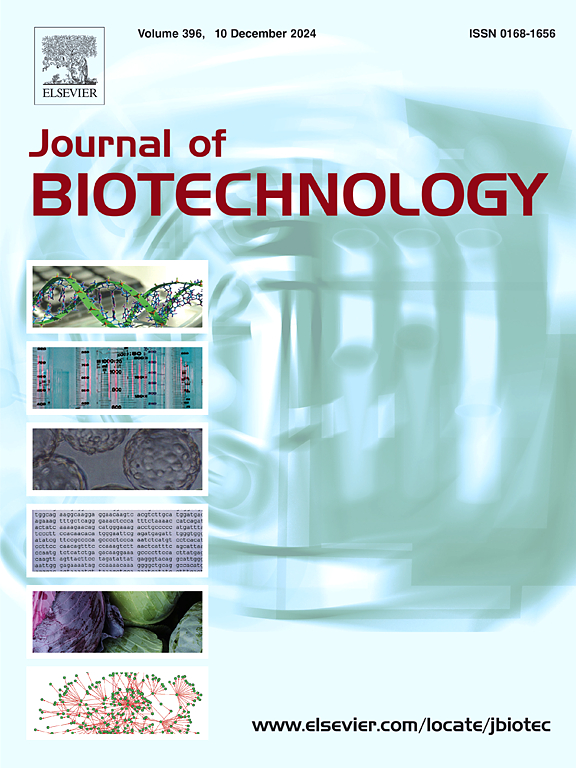Enhancing secondary metabolite biosynthesis from ethnomedicinal plant Solanum nigrum L. through cytogenetically stable mass propagation, transgenic hairy root induction, and using different LED light and culture vessels for hairy root culture
IF 4.1
2区 生物学
Q2 BIOTECHNOLOGY & APPLIED MICROBIOLOGY
引用次数: 0
Abstract
This study aimed for stepwise enhancement of bioactive compound production in ethnomedicinal plant Solanum nigrum through novel approaches of micropropagation, hairy root induction, and treatment of hairy roots with various physical conditions. Polyamines were first-time used for in vitro shoot multiplication of S. nigrum, where highest shoot numbers (55.70 ± 0.64) were observed in Murashige and Skoog’s (MS) medium with 0.2 mg/L thiadiazuron + 20 mg/L spermine, whereas maximum root numbers (34.20 ± 0.80) were observed in ½MS medium with 0.5 mg/L indole-3-acetic acid. Pioneer studies of cytogenetical fidelity assessment through inter simple sequence repeat (ISSR) and start codon targeted (SCoT) markers, and chromosome analysis approved genetic uniformity in regenerated plants. Cent percent hairy roots were induced from in vitro S. nigrum leaves (25–30 roots/explant) using Agrobacterium rhizogenes (A4 strain). PCR of transgenes confirmed the transformed nature and absence of bacterial contamination in hairy roots. HPLC studies indicated greater secondary metabolites in hairy roots than in vivo and in vitro plants. Hairy root culture with different culture vessels revealed overall better biomass gain in tightly sealed vessels. However, hairy root cultures treated with red light showed highest biomass accumulation in fresh (2380.13 ± 16.83 mg) and dry (174.66 ± 4.68 mg) weight with maximum solasodine (3.25 ± 0.04 mg/g) and diosgenin (1.03 ± 0.02 mg/g) contents, whereas optimal production of caffeic (3.51 ± 0.05 mg/g), coumaric (2.53 ± 0.06 mg/g), ellagic (0.18 ± 0.02 mg/g), and ferulic (2.17 ± 0.03 mg/g) acid production was found in blue light. These reproducible protocols can be utilized in future bioreactor-mediated mass-culture of hairy roots for commercial-level secondary metabolite production from S. nigrum.
通过细胞遗传稳定的大量繁殖、转基因毛根诱导以及使用不同的 LED 光和培养皿进行毛根培养,提高民族药用植物黑木耳(Solanum nigrum L. )的次生代谢物生物合成能力
本文章由计算机程序翻译,如有差异,请以英文原文为准。
求助全文
约1分钟内获得全文
求助全文
来源期刊

Journal of biotechnology
工程技术-生物工程与应用微生物
CiteScore
8.90
自引率
2.40%
发文量
190
审稿时长
45 days
期刊介绍:
The Journal of Biotechnology has an open access mirror journal, the Journal of Biotechnology: X, sharing the same aims and scope, editorial team, submission system and rigorous peer review.
The Journal provides a medium for the rapid publication of both full-length articles and short communications on novel and innovative aspects of biotechnology. The Journal will accept papers ranging from genetic or molecular biological positions to those covering biochemical, chemical or bioprocess engineering aspects as well as computer application of new software concepts, provided that in each case the material is directly relevant to biotechnological systems. Papers presenting information of a multidisciplinary nature that would not be suitable for publication in a journal devoted to a single discipline, are particularly welcome.
 求助内容:
求助内容: 应助结果提醒方式:
应助结果提醒方式:


